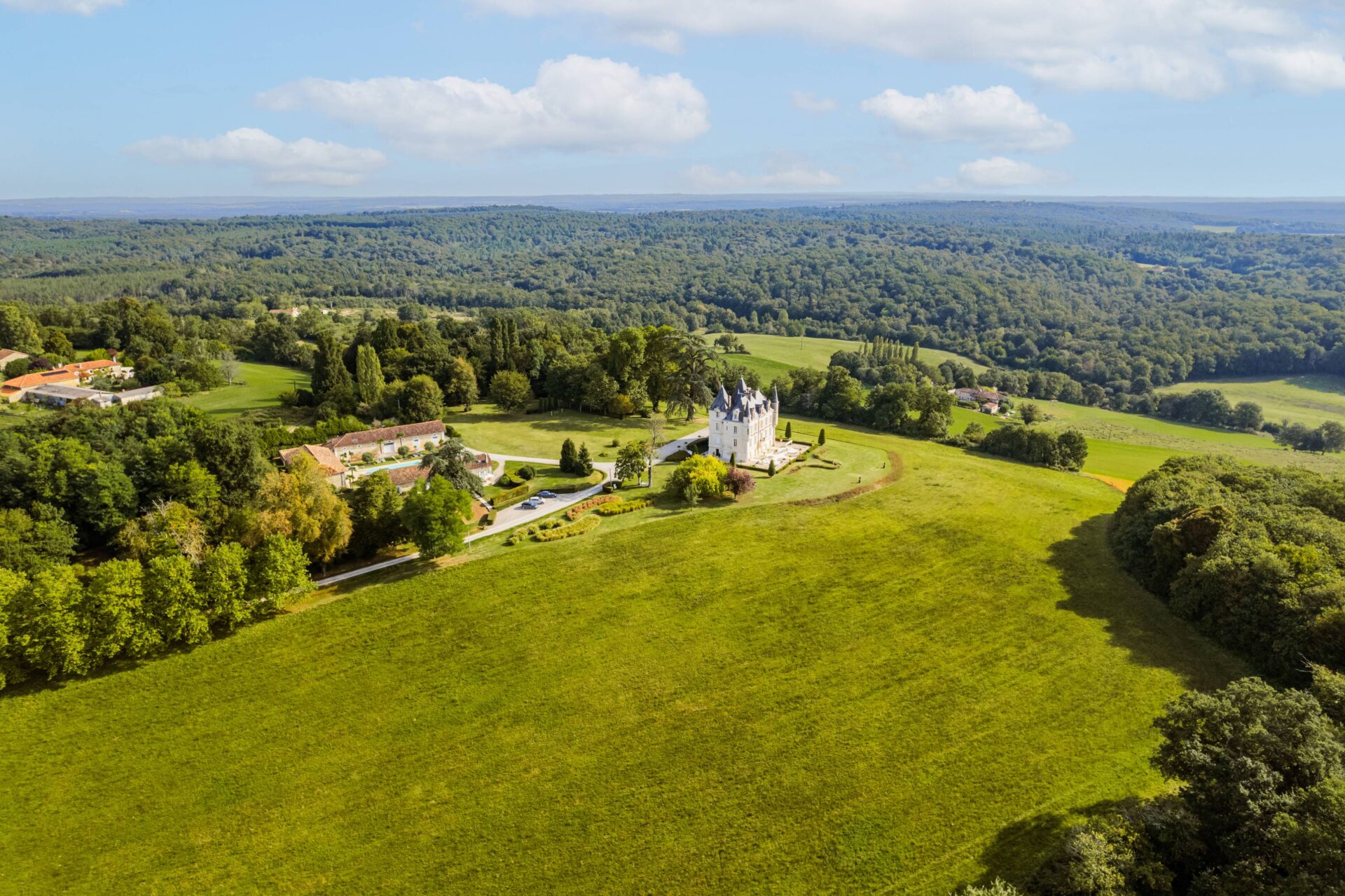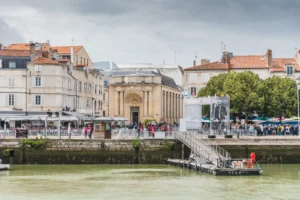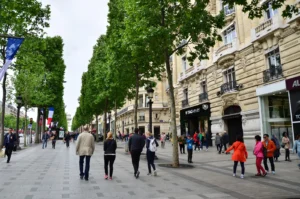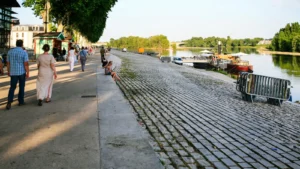When people hear château, they often picture a storybook castle with turrets and moats. But in France, the meaning is broader—and more complex. Is it a castle? A palace? A manor house? For international travelers, heritage enthusiasts, and even property seekers, understanding what a château truly is can feel overwhelming.
France has tens of thousands of châteaux, each with its own identity, era, and function. Some are fortified medieval castles, others are elegant Renaissance homes surrounded by gardens. Many have been lovingly restored, while others quietly age in rural isolation. Without context, it’s hard to know what qualifies as a château, how they differ from other estates, or why they matter today.
This guide clears the confusion. You’ll discover what defines a château in France, beyond the romantic imagery, and explore how these estates evolved from noble residences to symbols of French heritage.
Whether you’re planning a trip, dreaming of a stay, or simply curious about their legacy, this blog offers a clear, informed starting point. We’ll walk through their historical roles, architectural traits, cultural significance, and what visiting or living in one today means.
French châteaux are more than landmarks. They’re living pieces of history—elegant, enduring, and deeply rooted in France’s identity.
What Is a Château in France?
Beautiful garden in Chateau de Lasfonds
The term château in France refers to a grand, historically significant residence—often set in the countryside—that once served as the home of noble families, landowners, or aristocrats. Unlike the common association with castles, a French château is not always fortified. Many were never built for military defense at all. Instead, they functioned as stately homes, governing estates, or seasonal retreats, often reflecting their owners’ wealth, taste, and power.
The word’s origins lie in the Latin castellum, meaning a fortified place, but its meaning has shifted over the centuries. In France, a château may be anything from a medieval fortress (château fort) to a lavish Renaissance mansion or even a working vineyard estate in regions like Bordeaux. What ties them together is not the structure itself but their historical purpose and social stature.
In regions like Languedoc, Cathar communities constructed fortified strongholds to shield themselves during the 13th-century Albigensian Crusade—a violent campaign led by the Catholic Church against heretical beliefs. Further north, châteaux in the Loire Valley stood as military bastions during the Hundred Years’ War, serving as fortified islands against English advances.
Châteaux are deeply rooted in France’s feudal past. Built on large estates, they often acted as residences and administrative centers for the land they overlooked. These homes were frequently used to host royal visits, manage agricultural production, or display architectural innovation and artistic patronage.
How Châteaux Differ from Other Grand Residences
They differ from other grand French residences in essential ways. For example, hôtels particuliers are urban mansions typically found within cities, while palaces like the Palais de Versailles were designed explicitly for royal court life. A château, by contrast, is more commonly found outside urban areas and combines residence, power, and prestige elements in a rural setting.
Modern usage of the word remains flexible. Some small manor homes carry the name due to tradition, while large estates that meet every architectural expectation might not officially hold the title. This ambiguity reflects the layered history behind each building—no two châteaux are precisely alike, and each carries its own architectural identity and cultural role.
Understanding what qualifies as a château requires more than a look at size or grandeur. It involves recognizing the estate’s relationship to French history, land use, and social hierarchy. The château is not simply a building but a living symbol of France’s past and present, shaped by centuries of change and preserved for its value in national memory.
The Historical Evolution of French Châteaux
Photo on Unlimphotos. Chateau de milandes who belong to Josephine Baker in dordogne
The story of French châteaux mirrors the social and political shifts that shaped the nation over a thousand years. Each era introduced these estates’ new functions, styles, and meanings, moving far beyond their origins as mere fortresses.
From Feudal Fortress to Power Symbol (10th–14th Century)
Châteaux first emerged during the feudal era, when land ownership defined power. Early châteaux were defensive strongholds—built to assert control over surrounding territories rather than to impress.
Constructed in stone, they featured keeps, drawbridges, and narrow slit windows, prioritizing survival over aesthetics. These buildings served as administrative hubs, where local lords enforced laws, collected rents, and commanded armies. Their architecture reflected their times: isolated, imposing, and often built on elevated ground for surveillance and defense.
While rural peasants lived in modest homes, the château became the architectural embodiment of nobility’s authority. At this stage, châteaux had little in common with the elegant residences that would come later.
Renaissance Shift: From Stronghold to Symbol of Victory
By the early 16th century, the châteaux had begun to lose their military role. Two significant developments marked this turning point.
- First, France’s victory over the Swiss Confederation, led by King Francis I, allowed the kingdom to reclaim the Duchy of Milan.
- Second, Joan of Arc’s earlier triumph in liberating Orléans had pushed the English out of the Loire Valley, diminishing the need for defensive castles.
With these military successes came a desire to commemorate national pride through architecture. King Francis I commissioned the Château de Chambord—an opulent estate celebrating the French victories and a new era of peace.
Soon, noble families followed his lead, constructing summer residences along the Loire. These new châteaux embraced open courtyards, decorative facades, and expansive gardens, marking a decisive break from the defensive designs of the past.
Italian Renaissance Influence and Cultural Flourishing
France’s brief rule over Milan exposed its elite to the grandeur of the Italian Renaissance. Enamored with Italian artistry, King Francis I invited figures such as Leonardo da Vinci to the French court. Their influence reshaped French château design, introducing harmonious proportions, ornate staircases, and classical detailing.
The Loire Valley became a canvas for Renaissance innovation. New châteaux emphasized beauty, leisure, and intellectual sophistication, blending French sensibilities with Italian elegance. Architecture shifted from fortification to celebration.
Baroque Expansion and the Pull of Paris
In the 17th century, royal influence began to centralize around Paris. The court moved away from provincial estates and commissioned new châteaux closer to the capital. Versailles, Chantilly, and others redefined aristocratic grandeur with vast halls, mirrored galleries, and manicured grounds. These Parisian châteaux set a new standard in courtly architecture, outshining their predecessors in scale and opulence.
Still, many noble families retained their Loire Valley properties as seasonal retreats. The regional châteaux remained well-maintained, preserving their architectural integrity long after political focus had shifted elsewhere.
5 Most Beautiful French Châteaux to Visit or Rent for an Unforgettable Stay
Photo on Unlimphotos. A chandelier hangs out of the golden-painted ceiling and stucco medallion of a chateau in France.
French châteaux are admired worldwide for their timeless beauty, grand design, and architectural influence. These historic estates capture the evolution of French architecture, from fortified medieval castles to elegant Renaissance masterpieces and opulent Baroque palaces.
The following châteaux offer a rare glimpse into centuries of design, craftsmanship, and cultural refinement for travelers, history enthusiasts, and those seeking to rent a castle in France.
1. Château de Lasfonds: A Peaceful Neo-Gothic Château for Modern Escapes
Built in the 1800s, Château de Lasfonds is a privately restored estate in the scenic French countryside. It features a sophisticated blend of Neo-Gothic and Neo-Renaissance architecture, highlighted by pointed arches, period stonework, and symmetrical façades. While the exterior celebrates historic elegance, the interior has been thoroughly modernized with air conditioning, floor heating, and luxury furnishings, creating a unique balance of comfort and character.
The château spans 6.5 hectares of elevated land, offering panoramic countryside views and manicured gardens. Its peaceful location provides a quiet alternative to traditional tourist routes, yet remains within driving distance of Bordeaux and Paris.
Designed for gatherings of up to 20 guests, Lasfonds welcomes those in search of more than just beautiful scenery. Within its walls, friends reunite, families celebrate milestones, and solo travelers find the calm that busy life rarely allows.
Seasonal highlights include a private pool, ideal for spring and summer stays, and cozy interiors during the winter months. For those looking to rent a château in France that combines history with tranquility, Lasfonds offers a truly memorable experience.
2. Château de Chambord: The Pinnacle of French Renaissance Castle Design
Château de Chambord, located in the Loire Valley, is an internationally recognized example of French Renaissance château architecture. Commissioned by King Francis I in the early 16th century, this iconic estate features more than 400 rooms, elaborate dormers, and a roofline that resembles a sculpted skyline.
The centerpiece is a double-helix staircase rising through the heart of the building, which is attributed to Leonardo da Vinci’s influence.
Unlike many residential châteaux, Chambord was conceived as a royal power and vision statement. Its harmonious blend of classical and Gothic elements reflects the architectural innovation of the period.
Surrounded by a vast walled forest, the estate also includes formal gardens, hunting pavilions, and scenic walking paths. Today, it remains one of the most visited châteaux in France and a landmark of Renaissance creativity.
3. Château de Pierrefonds: A Restored Gothic Castle with Storybook Appeal
Initially constructed in the 14th century, Château de Pierrefonds was reconstructed in the 19th century by architect Eugène Viollet-le-Duc for Napoleon III. This ambitious restoration brought the château back to life as a Neo-Gothic fortress with towers, battlements, and a functioning drawbridge.
The château was designed to evoke the romantic ideals of medieval chivalry, blending historical accuracy with artistic interpretation. Located near the Compiègne Forest, it is a popular destination for architecture lovers, history buffs, and film productions. Its dramatic exterior and furnished interiors offer a striking look into France’s feudal and imperial past, making it one of the most visually captivating historic castles in France.
4. Château de Chenonceau: A Renaissance Château Defined by Feminine Influence
Suspended gracefully over the River Cher, Château de Chenonceau is one of France’s most architecturally refined Renaissance châteaux. Built in the 16th century and later expanded under the guidance of powerful women like Diane de Poitiers and Catherine de’ Medici, the château is both an artistic and cultural landmark.
Its layout features a symmetrical bridge-gallery that spans the river, elegant gardens arranged in classical French patterns, and interiors carefully preserved with original tapestries and paintings.
Often referred to as the “Château of the Ladies,” Chenonceau represents a rare blend of architectural symmetry, historical continuity, and feminine legacy. It remains a highlight for travelers exploring the Loire Valley’s best French castles.
Photo on Unlimphotos. Gardens of the Chateau de Villandry, Chateau in France
5. Château de Vaux-le-Vicomte: The Birthplace of Baroque Grandeur
Completed in the mid-17th century, Château de Vaux-le-Vicomte set the standard for French Baroque château architecture. The estate was built by Nicolas Fouquet and designed by a legendary team—architect Louis Le Vau, painter Charles Le Brun, and landscape designer André Le Nôtre—and introduced the integrated symmetry and theatrical scale that would later define Versailles.
The château’s layout emphasizes axial balance in its structure and gardens. Mansard roofs, colonnaded wings, and grand salons define the primary residence, while the formal gardens extend across terraces, fountains, and reflecting pools.
Though Fouquet’s political downfall limited the château’s use, its legacy shaped the architectural direction of the entire French monarchy. Today, Vaux-le-Vicomte remains a testament to visionary design and an extraordinary example of luxury French château estates.
Living in a French Château Today
Photo on Unlimphotos. Fountain with water in the Chateau Versailles
Owning or residing in a château may evoke images of luxury and romance, but the reality is more complex. These estates demand a balance between preservation and practicality, where history must coexist with the needs of contemporary life. For many, living in a château means entering into a long-term relationship with a property that carries charm and responsibility.
Ownership Realities and Restoration Challenges
Many châteaux on the market today are centuries old and in varying states of repair. While their initial purchase price can seem surprisingly affordable compared to urban properties, the long-term costs tell a different story.
Renovating a listed building requires adherence to strict heritage guidelines, often limiting material choices and structural changes. Repairs must be completed using traditional methods, which can be costly and time-consuming.
In addition to restoration, owners must often modernize infrastructure—heating, plumbing, insulation—without compromising historical integrity. This balancing act between preservation and habitability can overwhelm those unprepared for the legal and logistical demands.
Daily Life Inside a Historic Estate
Life in a château is shaped by its scale and layout. Once designed for formal receptions or seasonal occupancy, rooms may feel impractical for everyday living.
Heating large spaces in winter, navigating worn staircases, or maintaining historic gardens adds a layer of complexity to routine life. Yet for many, this immersion in history offers a deep sense of place, rhythm, and personal fulfillment that urban living rarely provides.
Some residents embrace the solitude of rural château life; others convert portions of the property into guest accommodations or event spaces to generate income and offset upkeep.
From Private Home to Adaptive Reuse
Faced with maintenance costs and changing lifestyles, many château owners now pursue adaptive reuse strategies. Some properties have become bed-and-breakfasts, retreat centers, or venues for weddings and cultural programs. These uses allow estates to remain active without sacrificing their historic character.
Such transformations reflect a shift in mindset. Today’s château is less about private grandeur and more about creating shared experiences grounded in heritage and community value.
How to Visit a Chateau in France
Photo of Hallway of Chateau de Lasfonds, Chateau in France
Visiting a château in France offers more than a tour of lavish rooms or landscaped gardens. It is an invitation into centuries of history, design, and tradition. With thousands of estates across the country, each with its own story, level of preservation, and public accessibility, planning a visit requires thoughtful preparation.
Planning Ahead: Access and Seasonal Considerations
Not all châteaux are open year-round, and accessibility varies widely. Some estates operate as private residences and may only offer limited guided tours by appointment. Others, especially those designated as Monuments Historiques, maintain regular visiting hours and curated exhibitions. Seasonal closures during winter are common, particularly in rural regions.
Before visiting, it’s advisable to check the château’s official website or contact the regional tourism board for updated hours, ticketing options, and special events. Booking is often required for estate tours, especially during peak travel months or during heritage festivals like the Journées Européennes du Patrimoine in September.
Immersive Experiences: Tours, Stays, and Cultural Events
Many châteaux offer more than standard walkthroughs. Immersive experiences—such as historical reenactments, garden tours, cooking classes, or wine tastings—allow visitors to engage with the estate’s legacy on a deeper level. In certain regions, guests can stay overnight in converted château accommodations that blend historical ambiance with modern comfort.
Cultural programming is another draw. From classical music concerts to seasonal fairs, châteaux frequently host events that connect history with contemporary artistic life. These activities provide a unique perspective on how heritage properties remain relevant and vibrant in modern France.
Respectful Tourism and Preservation Awareness
Visiting a château also comes with responsibilities. Many estates are family-owned or operated by non-profit foundations committed to conservation. Respect for the property, staff, and preservation guidelines is essential. Visitors are generally expected to follow designated paths, avoid flash photography, and refrain from touching artifacts or original finishes.
Thoughtful tourism contributes to the survival of these historic sites. Entrance fees, donations, and participation in château-hosted events often directly support restoration projects and cultural programming, ensuring that future generations can experience these architectural treasures firsthand.
What Qualifies a Chateau in France for Landmark Designation?
Photo on Unlimphotos. Chateau de Chenonceau backlighted from the garden
Classifying a château as a national landmark—or Monument Historique—is more than a title in France. It formally recognizes cultural, historical, or architectural significance backed by legal protection and heritage funding. Not all historic estates receive this designation. The process is selective, and regional and national heritage authorities carefully apply the criteria.
Historical and Cultural Significance
The first consideration is historical context. A château may qualify if it played a notable role in political events, hosted significant figures, or reflects a distinct era in French history. Estates linked to regional identity, religious movements, or military campaigns are often prioritized. The more a château represents a particular chapter of national or local history, the stronger its case for designation.
Cultural value also matters. This includes estates that served as artistic centers, supported intellectual life, or contributed to the evolution of architecture and design in France. Châteaux, which are associated with prominent writers, artists, or scientific advancements, may be considered culturally significant even if their architecture is modest.
Architectural Integrity and Uniqueness
A château’s design must offer a clear and compelling example of a particular architectural style or period. Authorities look for originality, craftsmanship, and preservation of key elements—façades, interiors, structural components, and landscape design. Buildings that remain largely intact or have undergone high-quality restorations stand a better chance of being listed.
In cases where multiple additions or renovations have occurred over centuries, the château must still demonstrate architectural coherence or reveal important layers of stylistic evolution.
Documentation and Condition
To be considered for landmark designation, a château must be well documented. Historical records, architectural surveys, and ownership archives help heritage officials assess the estate’s authenticity and significance. While some sites are protected despite partial ruin, structural stability and conservation potential are essential to final decisions.
Designation brings obligations as well as prestige. Once listed, any renovations or changes to the château’s structure must receive prior approval from heritage authorities. In return, owners may access financial aid, tax benefits, and technical expertise to support long-term preservation.
Experience French Elegance at Château de Lasfonds
Front view of Chateau de Lasfonds in France
Every detail at Château de Lasfonds illustrates a quiet dedication to heritage, comfort, and ambiance. From original stonework to thoughtful modern accents, the estate provides a setting where time slows and presence matters. Embrace the rhythm of countryside life, where each season brings charm, and space is yours.
Book now to secure your stay and experience one of France’s most intimate and architecturally rich château settings.
Interior setting of Chateau de Lasfonds
There’s no performance here—only presence. Meals unfold slowly under the trees. Mornings begin with fresh bread and coffee in the garden. Evenings stretch on over wine and conversation. The experience is not scripted. It’s shaped by the people who come and the time they truly give themselves to be here.
Easily accessible from Paris by TGV and a short drive from nearby airports, Château de Lasfonds offers rare privacy without isolation. For those who want to feel the meaning behind centuries of French architecture and rural heritage, this château is not just a destination—it’s a continuation of the story.
Book your stay at Château de Lasfonds and discover what it means to inhabit a chateau in France, truly, quietly, beautifully, and on your terms.
FAQs About Châteaux in France
A château in France usually refers to a stately home or rural estate, often unfortified and built for residence or leisure. A castle, or château fort, served defensive purposes during medieval conflicts. While the terms can overlap, their historical roles and designs differ significantly.
Not all châteaux in France are open to the public. While many heritage-listed estates offer tours, exhibitions, or event spaces, others remain private residences. Accessibility depends on ownership, preservation status, and regional regulations.
Yes, foreigners are allowed to purchase a château in France. Buyers must follow French property laws and consider potential restrictions if the château is historically protected. Legal guidance and a complete structural assessment are highly recommended before purchasing.
There are approximately 45,000 châteaux in France, though their size, condition, and function vary widely. Some are well-preserved heritage sites, while others need restoration. Many continue to shape the cultural and architectural landscape of rural France.
Maintaining a château in France can be expensive, particularly if it’s large or historically protected. Costs include roofing, structural repairs, heating, garden care, and restoration. Listed monuments require specialized materials and approval for changes, increasing long-term expenses.
Many châteaux in France serve as venues for weddings, private celebrations, or retreats. These estates offer privacy, historical charm, and elegant settings. Bookings involve planning and coordination, especially for protected or high-demand properties.
Many châteaux in France offer overnight stays, from luxury accommodations to boutique guesthouses. These experiences allow travelers to immerse themselves in French heritage while enjoying comfort and privacy in a unique historical setting.
Yes, many people live in a château in France year-round or seasonally. These homes can be privately owned or shared between families and often serve mixed purposes—combining residence with hospitality or agricultural activities like vineyards or orchards.
The Loire Valley is known for its concentration of historic châteaux in France. Other regions with notable estates include Dordogne, Burgundy, Alsace, and Île-de-France. Each region reflects unique historical periods and architectural styles.
A château in France may receive landmark designation if it holds exceptional historical, architectural, or cultural value. Criteria include originality, preservation level, documented heritage, and connection to significant national or regional events. Designated sites benefit from legal protection and potential funding.
Living in a château in France can be rewarding but also challenging. Large spaces, high maintenance costs, and historic restrictions require careful planning. Many owners adapt part of the estate for modern use while preserving original features.
Château de Lasfonds stands out among châteaux in France for its balance of heritage and intimacy. Unlike large, commercialized estates, it offers a refined, private experience with preserved architecture, peaceful grounds, and thoughtful hospitality tailored to smaller gatherings and meaningful stays.




